Author: everbella
No Bake Strawberry Cheesecake Bites
Strawberries are hands down my favorite fruit. And when they are at their peak in the summer – I just cannot get enough of them.
I love them so much that I started growing my own so I could pick them and snack on them every day.
And one of my favorite ways to indulge in something special when it comes to Strawberries…is with…
Cheesecake!
Cheesecake is a longtime dessert craving of mine. And adding strawberries into the mix – is a duo I cannot resist!
These no-bake strawberry cheesecake bites are super easy to make! A delicious sweet treat that makes a great dessert for parties, brunch, or as an afternoon snack!
Here is what you will need:
- 1 pound of strawberries
- 4 oz cream cheese, softened (you can also find a vegan option for this)
- ¼ cup of powdered sugar
- ¼ tsp vanilla extract
- Graham cracker crumbs or crushed graham crackers (there are also gluten-free graham crackers if you need to enjoy it wheat-free!)
To Make:
- Cut off the tops of the strawberries and with a pairing knife – hollow out the inside of them.
- In a bowl, combine the cream cheese, powdered sugar, and vanilla with an electric mixer.
- Fill each strawberry with the cheesecake filling using a spoon, knife, or a piping bag if you have one.
- Dip the strawberry, cheesecake side down, into the graham cracker crumbs. (You can even drizzle some Complete Collagen+ on there for some caramel flavor!)
- Keep refrigerated until served (ideally 1 hour before eating to really let the cheesecake settle).
This dessert is a great way to indulge and you can make them year-round if you can get your hands on some nice strawberries.
Enjoy!
Skin Care Tips For Men
Men’s skincare is a growing trend. More and more men are taking care of their skin and seeking out the best ways to do so.
Skincare for men was always a bit more traditional and simple…
But more men are now seeking healthier, younger-looking skin, so it is a great time for men to re-evaluate their skin routine and look for new ways to take care of their skin.
While I always try to tailor my articles to both men and women…
I wanted to do something just for all my wonderful male readers too.
Something specifically tailored to them and their skin.
Because what works for women…
May not work for men.
Did you know that men’s skin is typically thicker than women’s?
So it makes sense that our skincare routines will differ.
So this one is for you, gentlemen 🙂
My 5 Top Skincare Tips For Men
1. Be Aware Of Your Shaving Technique
A lot of men shave their faces. And for many, they do it for their job and have to keep a clean face. Which means shaving almost daily. Which can take a toll on your face.
Multi-blade razors can actually work TOO well and shave too closely to the skin. If you find you are getting razor bumps, burns, or ingrown hairs – try a single or double razor instead.
Before you shave, wet your skin and facial hair well to help soften it. Be sure to use a moisturizing shaving cream if you can and always shave in the direction of your hair growth.
Rinsing after each swipe of the razor and changing the blade after 5-7 shaves can also go a long way to reduce irritation.
2. Try A Face Mask
Face masks aren’t just for women!
There are a few face masks tailored to men’s skin.
Men are prone to oily skin and clogged pores so a face mask is a great way to open up pores and help diminish that oily skin.
Here is a great mask idea for men with oily skin!
Ingredients
- 3 tablespoons finely-ground oatmeal
- ½ teaspoon of honey
- 2 tablespoons plain greek yogurt
Directions
- Mix all ingredients in a bowl until it forms a smooth paste.
- For the best results, the face should be pre-steamed a few minutes before applying, so it’s beneficial to use this mask after stepping out of the shower.
- Apply the mixture to the face and neck areas with clean hands or with a soft sponge or facial brush. Avoid the skin around the lips and eyes, as those areas are particularly sensitive.
- You can avoid any parts of your face that you are actively growing hair. For example – if you are growing a beard, you can skip that area and focus on the bare skin around it.
- Leave on for 15 minutes. When the time is up, rinse with cool water.
3. If You Workout – Wash Your Face!
Men typically tend to sweat more than women. Weight, level of physical fitness, temperature, and genetics can influence how much sweat men and women produce. And while women have just as many active sweat glands, men actually produce more sweat per gland than women do – this is why men sweat more than women.
And working out produces a whole lot of sweat!!
But one thing a lot of men may not think of is to wash their face after a workout. After your workout, you should wash your face to cleanse away sweat and bacteria to prevent your pores from getting clogged.
Ideally, this should be done within 15 minutes or so of completing your workout. Since sweat contains salt, leaving it on your face after exercising can cause irritation and dehydration.
4. Use Natural Products and Be Sure to Read Labels
So many of us tend to buy what looks good and what is cost-effective without much thought. But there are so many products that can do more harm than good on the skin. Try and read labels before buying anything you put on your skin.
Consider product labels and ingredients. The skincare products you choose will depend on your skin type. For men with acne-prone skin, look for cleansers and moisturizers that say oil-free so they won’t clog your pores more.
If you have sensitive skin, use mild, fragrance-free products, as products containing fragrances can leave skin feeling irritated and dry. However, be cautious of products labeled unscented as many of these contain masking fragrances that can still irritate your skin even more.
You can even dry some homemade products!
Like a homemade aftershave.
Homemade aftershave is so incredibly easy to make and you can know exactly what is going on your skin. And it typically only requires two base ingredients: vegetable glycerin and witch hazel. But you can also add in essential oils for fragrance or added touch.
Here is a super easy aftershave you can do at home:
You will need
- 8-ounce bottle for the liquid
- 1 tbsp vegetable glycerin
- 3/4 cup witch hazel + 2 teaspoons (to fill the 8-ounce bottle)
- Optional – 15 to 25 drops of essential oil (lavender or cedarwood is quite popular!)
Instructions
- In an 8-ounce glass spray bottle combine the glycerin and essential oils.
- Swirl to combine, then add the witch hazel until the bottle is almost full.
- You’ll need about ¾ cup and 2 teaspoons of witch hazel, but it isn’t necessary to measure–just fill the bottle.
And apply as you normally would after a shave!
5. Wear Sunscreen
Sunscreen is for everyone – that means you too, men!
Sun damage attacks us all. So to help prevent sun damage that can lead to wrinkles, age spots, and other serious skin concerns – applying sunscreen to all exposed areas of the skin is essential. This includes your ears, neck, lips, and scalp for you men with thinner or even no hair!
For best protection, use a broad-spectrum, water-resistant sunscreen with an SPF of 30 or higher and reapply every two hours or immediately after swimming or sweating.
If you do find you got a little too much sun – read our article here on sunburn home remedies!
Our skin is our biggest organ, so taking care of it is essential for us all – men and women!
So all of you men out there – try to give that skin of yours some love!
5 Ways To Use Complete Collagen Plus
One of the things I love most about Complete Collagen Plus is…
It’s so versatile!
It can be added to your daily routine in so many great ways!
So if you have been using it for a while and want some ideas…
OR if you are just starting out with it and wondering how to use it…
Here are 5 ways you can use your Complete Collagen Plus
1. Old Faithful – The Spoon.
The easiest and most common way to use Complete Collagen Plus is to just take it right off the spoon.
Quick, easy, tasty….and delicious!
We would recommend taking a full packet a day to get the maximum nutrition.
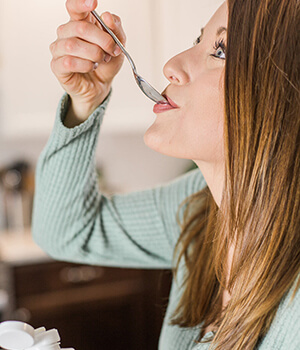
2. Add To Your Morning Coffee.
Adding a packet to your morning coffee is a great way to add a little flavor kick to your cup of joe. It can even replace sugar if you normally add that in. Add in that sweetness without loading your coffee with all that sugar!
I typically wait about 10 minutes after I pour my coffee to add it in. Just a little bit lukewarm or room temperature. Then I add a packet and mix it right in. It is just a great combination of coffee and caramel.
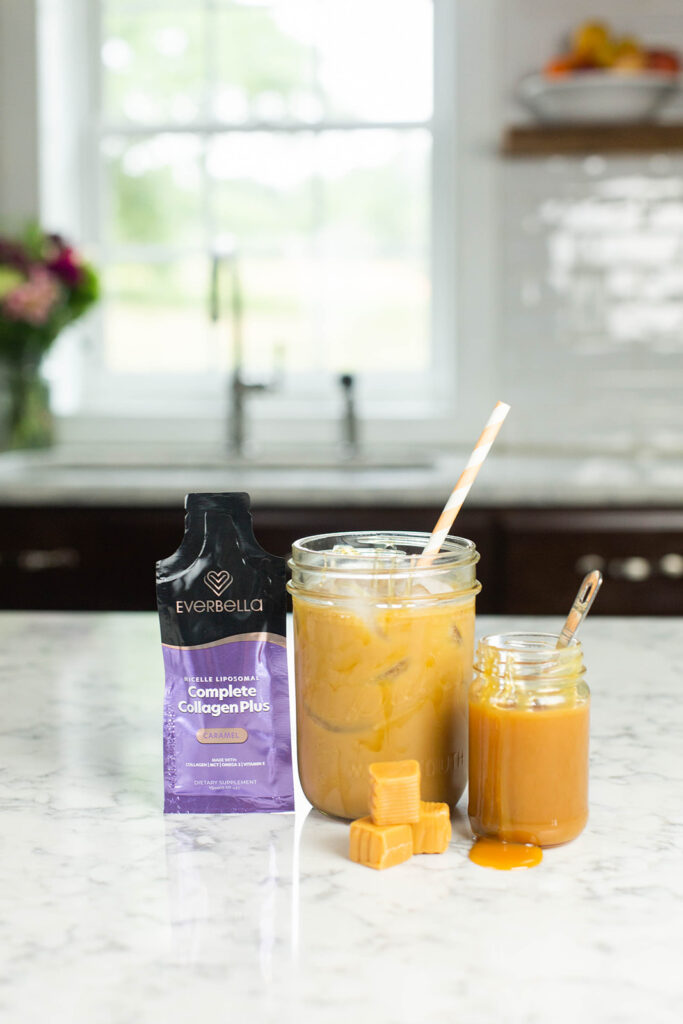
Of course, this doesn’t have to just be taken in the morning. Complete Collagen Plus can be taken any time of the day. So if you have afternoon coffee – feel free to add it in then!
3. Shake Up Your Smoothie.
Adding Complete Collagen Plus to your smoothie is a wonderful way to incorporate all the benefits of the product while also getting ample nutrition from the smoothie itself.
In fact – read our Energy Boosting Smoothie for a great Smoothie recipe!

4. Jazz Up Your Yogurt!
Yogurt can get boring. Sometimes you need to jazz it up a little. Oats and berries are a great way to start but I also started to add a little bit of my caramel goodness to it and wow!
Just brings it all together so well!
Try adding a packet to your yogurt!
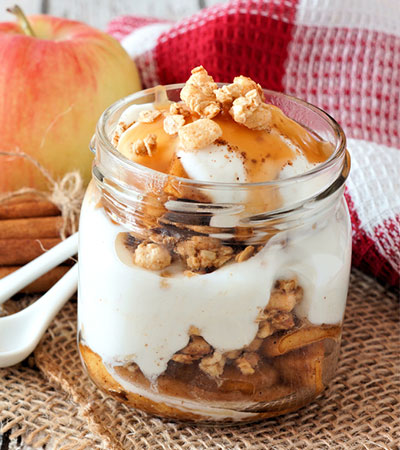
Is there a way that you like to take your Complete Collagen Plus that I didn’t list here?
5. Indulge a little! Add it to your Ice Cream!
Caramel drizzle on top of ice cream? Yes, please!
When I feel like indulging a little bit, I add a bit of Complete Collagen Plus to my ice cream. It makes a great sugar-free drizzle for many different desserts.
And it doesn’t have to be a guilty treat you add it to. You can even use it as a dip for your fruit-like apple slices!
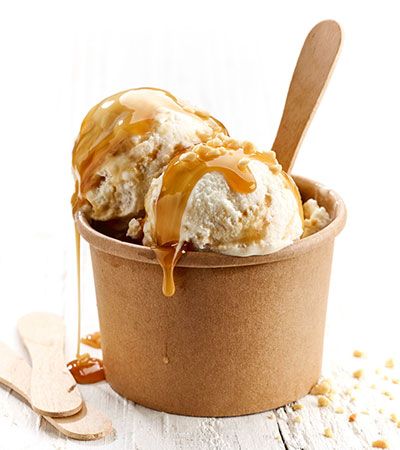
The sky is the limit of what tasty treats you can add this caramel sauce on. Taste plus amazing benefits, it really is a win-win.
I love hearing new ways to incorporate Complete Collagen Plus into my day! Please feel free to send me an email at support@everbella.com and let me know how YOU use Complete Collagen Plus!
Beauty Sleep – Fact or Fiction?
Beauty sleep is a phrase that we have all heard before.
I heard this my whole life.
And really paid no attention to the fact that it might be real…
But now that I am older – I have to come to realize…
That it is REAL and very much accurate.
Why do we need beauty sleep?
In order to function at our best each day, what we eat is important. What exercise routine you follow matters too. But when it comes down to getting a good night’s rest, sleep is the most important component.
But the problem is…
So many of us aren’t getting enough. The American Academy of Sleep Medicine reports that about 30% of adults in the U.S. regularly do not get enough sleep.
We know that lack of sleep can affect our wellbeing such as our cognitive function, stress levels, increase our blood pressure, cause weight gain, and lower our immune system. But what we might not realize is that our sleep also plays a huge role in the quality of our appearance.
5 Ways Sleep Impacts Our Appearance
1. Getting enough sleep can help save our skin from breakouts.
When we don’t get enough beauty sleep, our bodies release too much of the stress hormone cortisol, which can cause breakouts like pimples and blackheads, even in adults. And no matter what age you are, everyone HATES pimples.
2. Sleep encourages healthy blood flow to your skin, which can even out your skin tone. During sleep, your skin’s blood flow increases, and the organ rebuilds its collagen and repairs damage from UV exposure, reducing wrinkles and age spots. This can also help to prevent veins from peeking through and causing visible discoloration.
3. It can make us look happier!
Lack of sleep can actually cause the corners of the mouth to droop, making our face look sadder than we would after a good night’s rest. We also tend to frown more. If people say we look tired, it is because it really does show with our expression. Red, swollen eyes, dark circles, sagging eyelids, and paler skin can also signal to others that we are exhausted. Plus, when we sleep, we feel rested and more energized. When we have more energy, we feel more ourselves and feel more prone to showing off our beautiful smiles!
4. Now, it isn’t just about skin. Hair loss, breakage, damage, and even growth can all be affected by lack of sleep. Hair follicles (where hair growth begins) gain nutrients, vitamins, and minerals from blood flow. Since blood flow decreases when we’re short on sleep, our hair gets less nutrition and it weakens and can have difficulty growing.
Lack of sleep can also increase our stress levels. And this can lead to an increase in the hormone cortisol, which can lead to hair loss.
5. When we enter deep sleep, our body goes into recovery mode and produces growth hormones. These growth hormones create new cells that help heal our skin from any damage done during the day. Our skin actually uses the hours we sleep to heal itself from the day’s damage. So when we sleep, our skin gets the chance to improve. That rosy glow in the morning is real!
These growth hormones also include repairing collagen-producing cells. So our skin makes new collagen when we sleep too. Collagen is necessary to fill out your skin and prevent wrinkles from developing. The growth hormones ensure that your skin is producing enough collagen, which keeps your skin tight and elastic and allows your skin to repair acne and scarring across your body.
So as you can see, beauty sleep is real! And can greatly impact your skin and hair. Be sure to get as much sleep as you can. If you are having trouble sleeping, take a look at our article on ways to unwind. When we feel more relaxed, the more likely we are to be able to fall asleep at night!
Adding a collagen supplement to your regime is always a great idea too! Try out Complete Collagen+ to give your skin the benefits it needs and deserves!
Resources:
https://pubmed.ncbi.nlm.nih.gov/25266053/
The Amazing Effects of Scalp Massages on Hair Growth & Mood
Have you ever had a scalp massage?
They feel amazing!
But not only do they feel great, they actually benefit us both internally and externally. And they are inexpensive, non-invasive, and can be done at home. What more could you ask for?
Let’s Start With Hair Growth
Scalp massages are a great way to promote hair growth as they work by increasing blood flow to the scalp, which in turn stimulates hair follicles in the head. The increased circulation of oxygenated blood also promotes healthy skin and may reduce inflammation on your scalp. Plus, they’re an easy way to relax!
Studies have shown that scalp massages can help increase hair thickness by stretching the cells of hair follicles. This can help to stimulate the follicles to produce thicker hair. It’s also thought that a scalp massage may help dilate blood vessels beneath the skin – encouraging hair growth.
One study has shown that regular scalp massages may lead to thicker hair.
In this study, 9 men received a 4-minute scalp massage each day for 24 weeks. At the end of the study, it was found that the men had thicker hair than at the start.
Scalp massages not only feel amazing but they also are a great way to help us relax.
Scalp Massages For Relaxation
Scratching the skin on the scalp may stimulate nerve endings and release serotonin, a neurotransmitter that promotes feelings of happiness. Scalp massages are also great for reducing stress. Stress can lead to hair loss, which is why it’s important to find ways of relieving that stress.
In one study conducted by the Department of Psychology at Texas A&M University-Commerce in 2010, researchers found that four weeks after a single scalp massage session there was an improvement in both mood and stress levels. This is because stroking the skin on the scalp can stimulate nerve endings and release serotonin, a neurotransmitter that promotes feelings of happiness.
Here’s another interesting fact – this same study found that participants who received a single session of scalp massage reported lower levels of tension in their neck muscles when compared to those in the control group.
Now you know why people say they feel so relaxed after a scalp massage!
The next time you need to reduce stress, consider getting a relaxing scalp massage at home or in a salon. If you start feeling better and experiencing less stress – that’s just an added bonus!
Some Ways To Massage The Scalp
There are a few ways you can give yourself a scalp massage at home – or even have your partner or a friend do it for you!
Now, there is also the option of seeing a massage therapist as well – but of course, the cost can vary depending on the massage and what their rates may be. If you are seeking an inexpensive way, doing it at home is a great option!
Traditional Scalp Massage
To give yourself your own scalp massage – the most traditional way is using your fingertips only, with dry hair in any setting. While relaxing on the couch, waiting for sleep, etc.
- Use the fingertips of both your hands to apply light to medium pressure to your scalp, moving in small circles.
- Work your way across your scalp to cover all areas.
- Try to massage your scalp using your fingertips for at least 5 minutes at a time, several times a day.
Hair Wash Scalp Massage
This is a great option if you are pressed for time or looking for a relaxing way to start the day. You can use the same method above. Using your fingertips, gently massage your shampoo or conditioner into your hair for 5 minutes.
Then rinse your hair as usual.
Try it with our DIY hair growth conditioner recipe for added benefits!
Brushes and Massage Tools
Just like body massaging tools, there are also special tools you can buy for a scalp massage.
Although some dermatologists recommend using a scalp massager, others believe that a fingertip massage is just as effective. Of course, it’s up to you to decide which method works best for you.
Scalp massaging tools can be brushes or light handheld rubber massagers. You can work these all over your scalp in the same way that you’d use your fingers.
You can also use essential oils with your scalp massage. Some studies have shown that both lavender and peppermint essential oils may help promote hair growth.
Scalp Massage with Essential Oils or While Applying a Hair Scrub
If you are giving yourself a nice pamper session at home and doing a hair mask or scrub, doing a scalp massage while doing the hair mask is like a dynamic duo for your scalp!
Check out our Hair Growth Scrub and give yourself a scalp massage at the same time you do the scrub!
Scalp massages are a great way to end or begin the day! It can be a great way to reduce the stress of the day while promoting hair growth – or start the day off feeling relaxed!
Resources:
https://www.ncbi.nlm.nih.gov/pmc/articles/PMC4740347/
Summer Strawberry Spinach Salad
One of my favorite things about this time of year is…
All the fruits and vegetables I get to eat out of my own garden!
It’s so satisfying eating what you grew in your own backyard.
And one of my favorite things to make from my garden haul in the summer…
Is a summer salad packed full of delicious ingredients!
Of course, if you don’t have a garden, I always recommend visiting your local farmer’s market for the freshest ingredients – plus you get to support local!
One of my summer staples is a Strawberry Spinach Salad!
It’s jam-packed full of nutrients and tastes amazing! What more could you ask for?
I like to call it a Summer Spinach Salad, but of course, it can be made any time of the year.
Here’s what you will need:
Let’s start with the dressing!
I prefer a poppy seed dressing with this salad – it really makes all the flavors pop! But a vinaigrette is also a great option.
- 4 cups of white wine vinegar
- ¼ cup of sugar or honey
- 1 to 2 tbsp of poppy seeds
- ½ tsp salt
- ½ ground mustard
- 2 tsp of mayonnaise (this part is optional, it just helps make it a bit creamier)
- ½ cup of olive oil, or grapeseed oil
Instructions
- Whisk the white wine vinegar and sugar until the sugar is mostly dissolved (it’s okay if there is still some undissolved sugar). Add the poppy seeds, salt, and ground mustard, and whisk to combine.
- As you whisk the dressing steadily, pour the olive oil into the dressing in a slow stream and continue whisking until completely combined.
- Transfer to a covered container and store in the fridge. I try to chill my dressing for about an hour before I mix up my salad.
- NOTE: It can be saved for 2 weeks if you don’t use it all, but the dressing will separate as it sits; so be sure to shake it recombine before using.

Now onto the salad ingredients:
- 1/2 cup chopped pecans (sliced almonds or walnuts are also a great choice – you can also toast your pecans if you want!)
- 5 cups of spinach
- 2 cups lettuce – I like to add just a few green lettuce leaves as well
- 16 oz strawberries sliced
- 1/2 thinly sliced red onion – Strawberries and red onion is a really great flavor combination!
- 4 sliced baby cucumbers or regular-sized – I grow baby cucumbers so that is what I use
- Pinch sea salt & pepper
- Feta cheese crumbles (you can use any substitute to make it a vegan option)
Making the salad:
Personally, I don’t really have a routine of how I make it in terms of what ingredients go in first so to each their own!
One thing I do – I add pecans into the mix but I also leave some leftover and sprinkle that and the feta on top of the mixture once the dressing is all added. I also am pretty generous with the dressing. I like it very creamy so I use enough dressing to really coat the salad.
So now you know how to make this delicious salad. I just want to tell you a bit about what makes this salad so nutritious! Each ingredient comes with its own benefits – so of course, the salad tastes great AND is good for us!
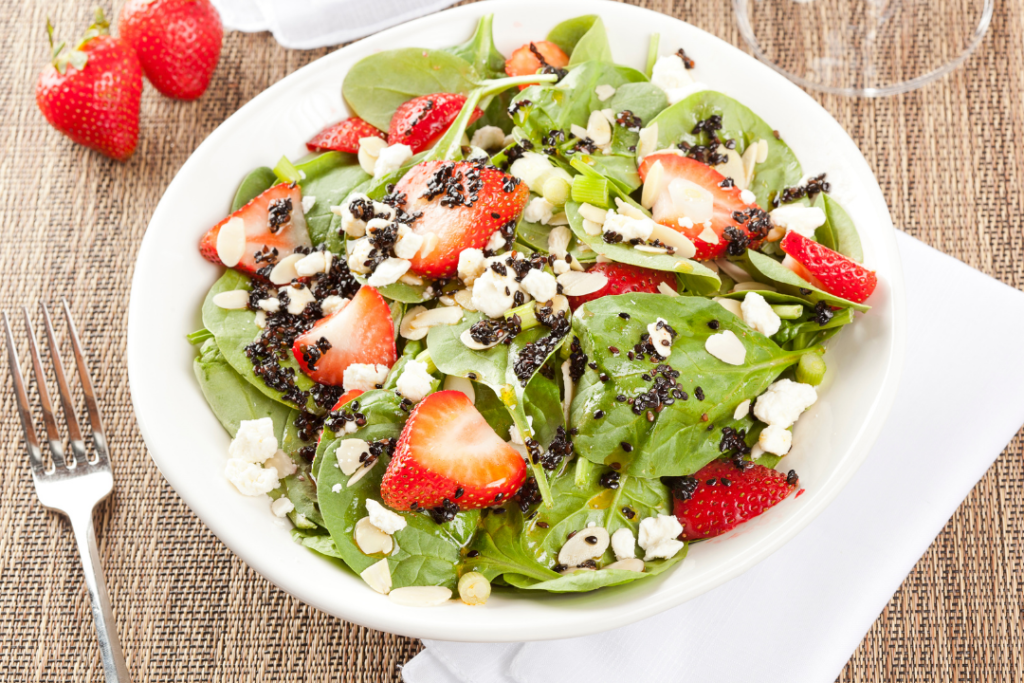
Benefits of this Summer Spinach Salad
Pecans
The great thing about raw pecans is that they are cholesterol-free, sodium-free, and low in carbohydrates. They also contain a ton of protein, healthy fats, and fiber. Most of the fat found in pecans is monounsaturated fat. Eating foods with monounsaturated fat instead of foods high in saturated fats (like potato chips) can help lower levels of bad LDL cholesterol. Keeping your LDL cholesterol low cuts down your risk of developing heart issues.
Pecans are also a great source of calcium, magnesium, and potassium – all of which can also help support heart health and have great anti aging properties which is ideal for our skin!
They are a great guilt-free snack!
Strawberries
Strawberries are at their prime in the summer. They are one of my favorite things to grow. And picking them is fun for the whole family!
They also come with quite the punch!
Strawberries are an excellent source of vitamin C, an antioxidant we need for optimal immune support as well as skin health. They also contain folate – also known as B9. B9 is important for normal tissue growth and cell function.
Potassium is another great benefit of eating strawberries. This mineral is involved in essential body functions, like regulating cardiovascular health.
Spinach
I LOVE spinach. Cooked or raw!
Spinach is rich in vitamins A, C, and K, magnesium, iron, and manganese. This leafy green can help benefit our eye health, reduce oxidative stress, promote radiant skin and support heart health.
Green Leaf Lettuce
Not just green leaf lettuce but all salad greens contain vitamin A and C, beta-carotene, calcium, folate, fiber, and phytonutrients.
They are a great choice because they do not contain cholesterol and are naturally low in calories and sodium. I like to grow red leaf, green leaf, and good old fashion romaine lettuce.
Cucumbers
Cucumbers are one of my favorite snacks as well as a salad garnish. Give me some cucumbers and dip and I am in heaven!
Cucumbers are rich in antioxidants, vitamins A, C, and K. As well as potassium, magnesium, fiber, and protein. They really come with a plethora of goodness!
Cucumbers are low in calories and can promote hydration, glowing and hydrated skin, weight loss, may lower blood sugar, and promote a healthy digestive system.
Red Onion
Red onions are a rich source of potassium, magnesium, and vitamins K, B6, and C.
Their nutritional properties can help boost our immune system, healthy hair and skin, support a healthy heart and also help lower LDL cholesterol & triglycerides.
This salad comes with it all! Taste and ample nutrition! These ingredients benefit us from the inside out. Including our skin!
So what are you waiting for? Give it a try and see for yourself!
